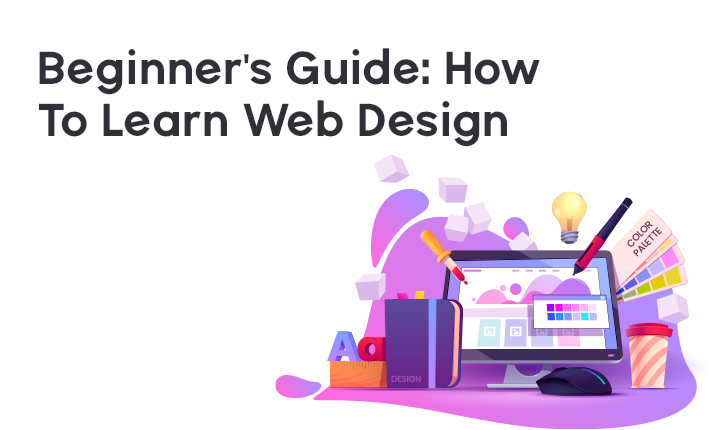Web design is a captivating field that combines creativity and technical skills to create visually appealing and functional websites. Whether you're a beginner looking to start a new career or someone who wants to enhance their existing skills, this comprehensive guide will walk you through the step-by-step process of learning web design. Let's dive in!
1. Understand the Foundations:
To embark on your web design journey, it's essential to grasp the basics:
* Familiarize yourself with the internet, web browsers, and the fundamental concepts of websites.
* Gain a basic understanding of HTML (Hypertext Markup Language), CSS (Cascading Style Sheets), and JavaScript, which are the core technologies used in web design.
* Explore concepts such as layout, typography, color theory, and user experience (UX) principles that play a vital role in creating captivating web designs.
2. Define Your Learning Path:
Setting clear learning goals will help you stay focused and motivated. Consider the following steps:
* Identify your objectives and the specific areas of web design you want to specialize in.
* Break down your goals into smaller, achievable tasks, such as learning HTML and CSS syntax, creating basic web pages, or building a portfolio website.
3. Master HTML:
HTML forms the foundation of web design. Begin by understanding its structure and key elements:
* Study the various HTML tags used for headings, paragraphs, images, links, lists, and forms.
* Learn about semantic HTML and the importance of proper document structure.
* Practice coding HTML by creating simple web pages. Experiment with different tags and elements to gain hands-on experience.
4. Dive into CSS:
CSS is responsible for the visual presentation and layout of web pages. Here's how to tackle it:
* Start by learning CSS syntax, selectors, properties, and values.
* Understand how CSS controls typography, colors, backgrounds, positioning, and responsive design.
* Experiment with CSS frameworks like Bootstrap or Foundation to expedite the development process and create responsive designs.
5. Embrace Responsive Web Design:
In today's mobile-driven world, responsive web design is a must. Here's how to make your designs adaptable:
* Learn about media queries, flexible grids, and responsive images.
* Practice building responsive layouts that provide an optimal user experience across different devices and screen sizes.
6. Enhance Your Design Skills:
Aesthetics play a crucial role in web design. Elevate your designs with these steps:
* Study design principles such as color theory, typography, whitespace, and visual hierarchy.
* Analyze and draw inspiration from existing websites to understand effective design choices.
* Develop an eye for detail and learn to create visually appealing and user-friendly designs.
7. Explore JavaScript (Optional):
JavaScript adds interactivity and dynamic functionality to websites. Consider these steps:
* Once you have a solid understanding of HTML and CSS, venture into JavaScript.
* Start with the basics, including variables, functions, and conditional statements.
* Progress to more advanced topics like DOM manipulation, event handling, and AJAX to create dynamic and interactive web experiences.
8. Build Projects and Create a Portfolio:
To solidify your skills and showcase your abilities, focus on these aspects:
* Put your skills into practice by working on real-world projects. Start with small projects and gradually tackle more complex ones.
* Build a portfolio website to showcase your work and demonstrate your skills to potential clients or employers.
* Regularly update your portfolio with new projects to reflect your growth and proficiency in web design.
9. Stay Updated and Engage with the Community:
Web design is a constantly evolving field. Here's how to stay in the loop:
* Follow design blogs, news websites, and industry influencers to stay updated with the latest trends, technologies, and best practices.
* Participate in web design forums, online communities, and social media groups to connect with other designers, ask questions, and share insights.
* Attend web design conferences, workshops, or local meetups to network with professionals and gain exposure to new ideas and techniques.
* Engage in continuous learning by exploring new tools, frameworks, and design methodologies.
Conclusion:
Learning web design is an exciting journey that requires a combination of theoretical knowledge and practical application. By understanding the foundations, mastering HTML and CSS, embracing responsive design, enhancing your design skills, exploring JavaScript, building projects, and staying updated with the latest trends, you'll be well on your way to becoming a skilled web designer. Remember to practice regularly, seek feedback, and never stop learning. So, dive in, be creative, and enjoy the process of learning and refining your web design skills. The web awaits your innovative designs!





Leave a reply